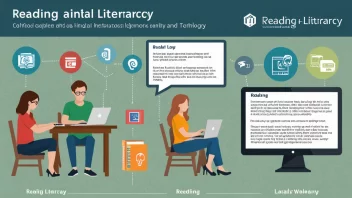In today's fast-paced world, mental health discussions have become increasingly important as individuals seek support and understanding. Two prominent platforms for these conversations are online forums and in-person gatherings. Each method has its own set of advantages and disadvantages, influencing how effectively mental health discussions can be conducted. This article aims to explore the pros and cons of both online and in-person discussions, helping readers understand which might be more suitable for their needs.
Accessibility
One of the most significant factors to consider when comparing online and in-person discussions is accessibility. Online platforms allow individuals from various geographical locations to participate without the constraints of travel or time. This is particularly beneficial for those living in remote areas or with mobility challenges.
In contrast, in-person gatherings typically require participants to travel to a specific location, which can be a barrier for some individuals. However, these physical meetings can foster a sense of community and belonging that online settings may lack.
Privacy and Anonymity
Online discussions often provide a greater degree of anonymity, allowing participants to share their feelings and experiences without fear of judgment. This can encourage more open and honest conversations, especially for those who may feel stigmatized in their local communities.
On the other hand, in-person discussions can create a safe and intimate environment where participants can build trust and rapport. While this setting may not offer the same level of anonymity, it can lead to deeper connections and understanding among group members.
Facilitation and Structure
Another key difference between online and in-person discussions is the level of facilitation and structure. Online platforms often provide various tools for moderation, allowing facilitators to manage the conversation flow and ensure that everyone has a chance to speak. However, the lack of physical presence can sometimes make it challenging to gauge participants' emotions and reactions.
In-person gatherings, on the other hand, allow facilitators to read body language and respond to participants' needs in real time. This can lead to more dynamic and responsive discussions, but it may also require more skill and experience from the facilitator.
Engagement and Interaction
Engagement levels can vary significantly between online and in-person discussions. Online platforms may struggle with distractions, as participants can easily become sidetracked by notifications or other online activities. However, some platforms offer interactive features such as polls, breakout rooms, and chat functions that can enhance engagement.
In-person discussions often foster richer interactions, as participants can engage in face-to-face conversations, share non-verbal cues, and participate in group activities. This can lead to a more immersive experience, but it may also require participants to be more vulnerable and open to sharing their thoughts and feelings.
Comfort and Safety
Comfort levels can greatly influence the effectiveness of mental health discussions. Online platforms may provide a sense of safety for those who feel anxious about speaking in front of a group. Participants can choose their environment, whether it's their home or a quiet café, which can enhance their comfort during discussions.
Conversely, in-person gatherings can create a sense of safety through physical presence and connection. The shared experience of being in the same room can help participants feel more supported and understood. However, it may also trigger anxiety for those who struggle with social interactions.
Community Building
Building a sense of community is essential for long-term mental health support. Online platforms can help individuals connect with others who share similar experiences, but these connections may be less profound compared to in-person interactions. Online communities can also be transient, with participants coming and going without establishing lasting relationships.
In-person gatherings often foster stronger bonds as participants share their experiences, provide support, and form friendships. The shared physical space can create a sense of belonging that is difficult to replicate online. However, maintaining these communities requires ongoing effort and organization.
Conclusion
Both online and in-person discussions have their unique advantages and disadvantages when it comes to creating safe spaces for mental health conversations. Online platforms offer accessibility, privacy, and flexible engagement, making them ideal for individuals seeking anonymity and convenience. In-person gatherings, on the other hand, provide opportunities for deeper connections, community building, and immediate support.
Ultimately, the choice between online and in-person discussions depends on individual preferences, comfort levels, and specific needs. By understanding the strengths and weaknesses of each approach, individuals and facilitators can create more effective and supportive environments for mental health discussions.






